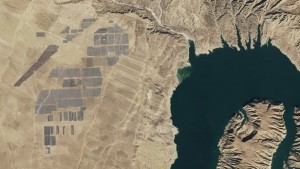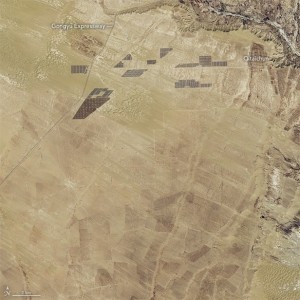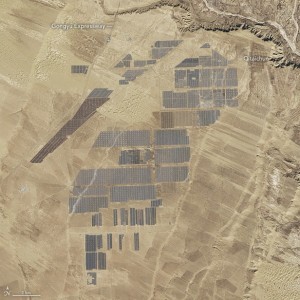With renewable energy on the rise, it makes perfect sense for the title “world’s largest solar plant” to change hands pretty quickly. In 2014 for example, the 550 MW Topaz Solar Farm held the title, to be toppled in November by a 648 MW plant in Kamuthi India. At this point in time, China’s Dam Solar Park has risen above them all with 850 MW of capacity. Sound like a lot? Here’s some NASA satellite imagery to help put things into perspective.
(Close-up of Dam Solar Park on January 5, 2017)
The images were taken by NASA’s Operational Land Imager on Landsat 8, the satellite behind Google Earth’s new high-res imagery that launched in 2013. This satellite is capable of snapping images in greater detail, truer colors and at almost double the rate of its predecessor, Landsat 7.
NASA has released two images of Dam Solar Park in China’s Qinghai province, one taken in April 2013 and the other on January 5 of this year, that show the rapid expansion of the farm over the four years in between. When the second photo was snapped, the plant covered 27 km sq (10 sq mi) and consisted of almost four million solar panels (the Kamuthi plant has 2.5 million).
China is leading from the front so far as solar power is concerned. Its total installed capacity doubled to 77 GW in 2016, surpassing Germany, the US and Japan to become the world’s largest producer of solar power. This followed a big jump in 2015, where its installed solar capacity went from 15 GW to 43 GW. The comparison of these two photos below offers a useful perspective on what this kind of approach to solar power looks like when put into action.
(Dam Solar Park as seen from space on in April 2013)
(Dam Solar Park on January 5, 2017)
Ask me anything
Explore related questions







